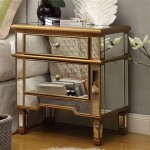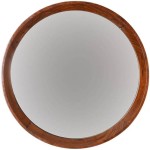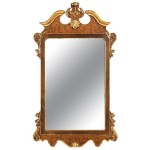Can You Cut Mirror With a Glass Cutter?
The question of whether a mirror can be cut using a glass cutter is a common one, particularly among individuals involved in DIY projects, home improvement, and artistic endeavors. The short answer is yes, a mirror can be cut with a glass cutter. However, the process is more nuanced and requires a specific technique, understanding of materials, and adherence to safety protocols compared to cutting standard glass. This article will delve into the necessary tools, steps involved, challenges, and safety considerations when attempting to cut a mirror using a glass cutter.
Mirrors, at their core, are simply glass sheets with a reflective coating applied to one side, typically through a process of silvering or aluminum deposition. This coating is what differentiates a mirror from a standard pane of glass and introduces certain considerations when cutting. The success of cutting a mirror relies on creating a clean, consistent score line through the glass, which then allows for a controlled separation along that line. The presence of the reflective coating doesn’t fundamentally alter the glass’s cutability, but it does increase the likelihood of chipping or splintering if the process is not executed correctly.
Therefore, while using a glass cutter on a mirror is possible, it’s not identical to cutting ordinary glass. The process demands precision, proper technique, and awareness of the subtle differences in how the material responds to the cutting process.
Essential Tools and Materials
Before attempting to cut a mirror, gathering the necessary tools and materials is crucial for a successful and safe execution. Here's a comprehensive list:
- Glass Cutter: A high-quality glass cutter is the most important tool. Glass cutters come in various designs, including those with a wheel made of steel or tungsten carbide. Tungsten carbide wheels are generally preferred for their durability and ability to maintain a sharp edge over time. The cutter should feel comfortable in the hand and allow for a smooth, consistent scoring motion.
- Straight Edge: A sturdy straight edge, like a metal ruler or a specialized glass cutting ruler, is essential for guiding the glass cutter along the desired cutting line. It should be long enough to span the entire length of the cut to ensure a straight and accurate score.
- Cutting Oil or Lubricant: Cutting oil, or a similar lubricant specifically designed for glass cutting, helps to reduce friction between the glass cutter wheel and the glass surface. This allows for a smoother score line and reduces the chance of chipping or cracking. Kerosene can also be used as a substitute.
- Safety Glasses: Safety glasses are paramount to protect the eyes from flying glass shards during the cutting and breaking process.
- Gloves: Cut-resistant gloves are recommended to protect the hands from cuts while handling the glass and during the breaking process.
- Measuring Tape: A measuring tape is needed to accurately measure and mark the desired dimensions on the mirror.
- Marker or Pencil: A marker or pencil is used to mark the cutting line on the mirror. Ensure the marker is easily visible but also easily removable.
- Clean Cloth: A clean, lint-free cloth is required to clean the mirror surface before scoring. This removes any dirt or debris that could interfere with the cutting process.
- Breaking Pliers or Notches: Breaking pliers or specialized breaking notches can be used to apply controlled pressure to the score line, facilitating the separation of the mirror. These tools are particularly useful for thicker mirrors or intricate cuts.
- Sandpaper or Glass Smoothing Stone: Sandpaper or a glass smoothing stone is used to smooth down the sharp edges of the cut mirror, preventing cuts and improving the overall finish.
- Work Surface: A flat, stable, and clean work surface is essential. It's preferable to work on a surface covered with felt or a similar soft material to prevent scratching the mirror.
Having all these tools readily available before commencing the cutting process is crucial for a successful and safe outcome.
The Cutting Process: Step-by-Step
The process of cutting a mirror with a glass cutter involves several critical steps. Each step requires careful attention to detail to ensure a clean and accurate cut.
- Preparation: Begin by thoroughly cleaning the mirror surface with a clean cloth and glass cleaner. This removes any dirt, dust, or fingerprints that could interfere with the scoring process. Next, accurately measure and mark the desired cutting line on the mirror using a marker or pencil. Double-check the measurements to ensure accuracy before proceeding.
- Lubrication: Apply a small amount of cutting oil or lubricant along the marked cutting line. This lubricant will reduce friction and help the glass cutter glide smoothly across the surface, creating a clean score line.
- Scoring: Place the straight edge firmly along the marked cutting line. Hold the glass cutter at a comfortable angle and apply consistent, moderate pressure while drawing the cutter along the straight edge. The goal is to create a continuous, even score line without stopping or varying the pressure. A proper score line will produce a faint scratching sound. Avoid going over the score line multiple times, as this can weaken the glass and lead to a jagged break.
- Tapping (Optional): For thicker mirrors, gently tap the underside of the mirror along the score line with the end of the glass cutter or a small hammer. This helps to encourage the glass to separate along the score.
- Breaking: There are several methods for breaking the mirror along the score line. For smaller pieces, the mirror can be placed on the edge of a table with the score line aligned with the edge. Apply gentle, even pressure on both sides of the score line to snap the glass. For larger pieces or more intricate cuts, breaking pliers or specialized breaking notches can be used. Position the pliers or notches along the score line and apply controlled pressure to separate the glass.
- Smoothing Edges: After the mirror is broken, the edges will likely be sharp. Use sandpaper or a glass smoothing stone to carefully smooth down the edges, removing any sharp points and creating a safer and more aesthetically pleasing finish. Start with a coarser grit sandpaper and gradually move to a finer grit for a smoother finish.
Each of these steps contributes to the overall success of the cutting process. Any deviation or lack of attention to detail could lead to an unsatisfactory result.
Challenges and Potential Issues
Cutting a mirror with a glass cutter is not without its challenges. Several potential issues can arise during the process, impacting the final outcome. Understanding these challenges allows for better preparation and mitigation strategies.
- Chipping and Splintering: One of the most common issues is chipping or splintering along the score line. This can occur if the pressure applied during scoring is uneven, the glass cutter is not sharp enough, or the breaking technique is too forceful. Using a high-quality glass cutter, applying consistent pressure, and employing a gentle breaking technique can minimize the risk of chipping.
- Uneven Breaks: An uneven break can occur if the score line is not continuous or if the pressure applied during breaking is not uniform. Ensuring a clean, consistent score line and applying even pressure during breaking are crucial for achieving a clean break.
- Mirror Coating Damage: The reflective coating on the back of the mirror can sometimes be damaged during the cutting process. This is more likely to occur if the score line is too deep or if the breaking technique is too aggressive. Using a light touch when scoring and employing a controlled breaking technique can help prevent damage to the coating.
- Glass Thickness: The thickness of the mirror can also pose a challenge. Thicker mirrors require more pressure during scoring and a more deliberate breaking technique. For very thick mirrors, it may be necessary to score both sides of the mirror before attempting to break it.
- Complex Shapes: Cutting complex shapes or curves requires a higher level of skill and patience. It may be necessary to make multiple score lines and gradually break away small pieces of glass to achieve the desired shape. Using a specialized glass cutting tool designed for curves can also be helpful.
Being aware of these potential issues enables a proactive approach to minimize risks and achieve a more successful outcome. Practice and patience are key to mastering the art of cutting mirrors with a glass cutter.
Safety Considerations
Safety should be the paramount concern when cutting a mirror with a glass cutter. Glass, by its nature, is a fragile material, and broken shards can pose a significant risk of injury. Adhering to proper safety precautions is essential to prevent accidents.
- Eye Protection: Wearing safety glasses is non-negotiable. Flying glass shards can cause serious eye injuries, and safety glasses provide a crucial barrier against this risk.
- Hand Protection: Cut-resistant gloves are highly recommended to protect the hands from cuts. Handling glass, especially during the breaking process, can expose the hands to sharp edges.
- Proper Ventilation: When using cutting oil or lubricants, ensure the work area is well-ventilated. Some lubricants may release fumes that can be harmful if inhaled.
- Secure Work Area: A stable and clean work surface is crucial to prevent accidents. The surface should be free of clutter and covered with a soft material to prevent scratching the mirror.
- Safe Disposal: Dispose of broken glass shards and scraps safely. Wrap them in newspaper or cardboard and label the package clearly to prevent injury to others.
- First Aid: Keep a first aid kit readily available in case of cuts or injuries. Knowing basic first aid procedures for glass cuts is also advisable.
- Children and Pets: Keep children and pets away from the work area to prevent accidents. Glass shards can be particularly dangerous for small children and animals.
By prioritizing safety and adhering to these precautions, the risk of injury can be significantly reduced. Taking the time to prepare and work safely is an investment in personal well-being.

How To Cut Mirror Glass Quick

How To Cut Mirror Glass Quick

How To Cut Mirror For Diy Mirrored Furniture Salvaged Inspirations

How To Cut A Mirror Without Glass Cutter 13 Steps

How To Cut A Mirror Without Glass Cutter 13 Steps

How To Cut A Mirror Without Glass Cutter 13 Steps

How To Cut Mirror For Diy Mirrored Furniture Salvaged Inspirations

How To Cut A Mirror Without Glass Cutter 13 Steps

How To Cut A Mirror Without Glass Cutter 13 Steps

How To Cut Mirror Bob Vila








